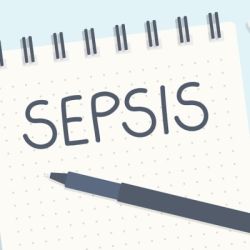Sepsis remains a major cause of mortality, accounting for nearly 20% of global deaths. Microcirculatory dysfunction, marked by irregular blood flow and increased permeability of blood vessels, is a characteristic feature of sepsis. This dysfunction can lead to tissue swelling and impaired organ function. Endothelial dysfunction, which is also seen in other acute inflammatory disorders like burns, trauma, and ARDS (including that induced by COVID-19), contributes to the similarities in clinical symptoms among these conditions.
Endothelial cells lining the blood vessels play crucial roles in vascular integrity, haemostasis, vasomotor control, and immunological defence. The endothelial glycocalyx contributes to these functions. Nitric oxide (NO) is a key regulator of vascular tone, synthesised by endothelial cells in response to various stimuli. Despite attempts to correct NO imbalance in sepsis, these efforts have been unsuccessful. Endothelial cells also produce prostacyclin, which promotes vasodilation, inhibits platelet adhesion, and vasoconstrictors like Endothelin-1 and Angiotensin-2, which regulate blood pressure.
Inter-endothelial junctional structures, including adherens junctions and tight junctions, play a crucial role in maintaining vascular integrity and regulating communication between endothelial cells and surrounding tissues. Adherens junctions, composed of proteins like VE-cadherin, regulate cell-cell adhesion and signalling.
In sepsis, proteolysis of VE-cadherin by enzymes like neutrophil elastase compromises junction integrity. Rho proteins, particularly Rac1 and RhoA, are crucial for maintaining adherens junction stability, with imbalances in their activity observed in sepsis models leading to increased vascular leakage. Tight junctions, composed of proteins like claudin and occludin, form barriers between cells, controlling the movement of ions and solutes. Dysfunction in tight junctions contributes to vascular leakage, seen in sepsis and other inflammatory conditions.
Disruption of adhesion molecules like connexins is mediated by pro-inflammatory cytokines such as TNF-α and IL-1β, whose production is triggered by NF-κB activation. NF-κB plays a crucial role in the inflammatory response by inducing the production of key cytokines like TNF-α. Glycocalyx degeneration also leads to vascular leakage, impaired perfusion, abnormal coagulation and leukocyte activity. This degeneration is mediated by sheddases activated by inflammatory cytokines and Reactive Oxygen Species (ROS). Breakdown of the glycocalyx and intercellular junctions exacerbates vascular leakage and inflammation, perpetuating endothelial injury.
Intravenous fluid therapy, a vital part of sepsis treatment, could worsen glycocalyx injury. Alternatively, rapid fluid infusion might induce endothelial shear stress, activating glycocalyx-shedding metalloproteinases or causing neutrophil-induced endothelial injury.
Preservation and restoration of endothelial function are key therapeutic targets in sepsis. Several approaches have been investigated:
- Imatinib targets tyrosine kinases involved in cytoskeletal remodelling and cell adhesion, enhancing endothelial barrier integrity. Studies show its potential to reduce vascular leakage and inflammation, making it a candidate for sepsis therapy.
- A selective vasopressin V1a receptor agonist, selepressin aims to mitigate the microcirculatory effects seen with non-specific vasopressin receptor stimulation. While preclinical data looked promising, clinical trials failed to demonstrate improved outcomes in septic patients.
- Mesenchymal stromal cells can potentially reduce organ dysfunction and coagulopathy in sepsis by protecting against endothelial barrier disruption. Although early studies showed promise, larger trials are needed to confirm efficacy.
- Beyond lipid-lowering effects, statins exhibit anti-inflammatory and endothelial protective properties. While retrospective analyses hint at improved outcomes in septic patients with pre-existing statin therapy, results from randomised controlled trials (RCTs) are inconsistent.
- PCSK-9 inhibitors, primarily used for managing hypercholesterolemia, show promise in preventing cardiovascular events by protecting endothelial integrity and reducing inflammation. Preliminary data from a pilot trial in severe COVID-19 patients suggest potential benefits in reducing mortality.
- Alpha adrenoceptor agonists inhibit sympathetic activity and reduce inflammation and endothelial dysfunction in septic models. Preclinical evidence supports their use, but clinical trials are needed for validation.
- Intermedin and adrenomedullin demonstrate protective effects on endothelial permeability and inflammation in preclinical sepsis models. While they show promise, further studies are required to assess their clinical utility.
- Partial inhibition of Adrenomedullin with Adrecizumab has shown efficacy in reducing endothelial leakage and improving outcomes in septic shock patients. Larger trials are warranted to confirm these findings.
- Despite promising preclinical data, clinical trials investigating the efficacy of vitamin C in sepsis have been disappointing, showing no mortality benefit.
- Canagliflozin exhibits protective effects on endothelial adherens and tight junctions in preclinical models, but clinical trials in sepsis are lacking.
- Mitochondrial-derived peptides like Humanin have shown endothelial protective properties in preclinical studies, but clinical evidence is lacking.
- Fresh Frozen Plasma administration in critically ill patients, including those with sepsis, may attenuate endothelial injury. While Activated Protein C initially showed promise in reducing mortality in severe sepsis, subsequent trials failed to confirm these results, and APC has been withdrawn from the market.
Each therapeutic strategy targets different aspects of endothelial dysfunction in sepsis, with varying levels of preclinical and clinical evidence supporting their use. Further research is needed to determine their efficacy and safety in the clinical setting.
Microvascular dysfunction plays a significant role in the morbidity and mortality of sepsis, with various pathological processes contributing to it. Despite the critical nature of vascular dysfunction and endothelial breakdown in sepsis, no pharmacological therapies are currently employed to mitigate vascular leakage. Clinical trials investigating potential endothelial protective agents have yielded disappointing results despite promising preclinical evidence. Future research should focus on targeted treatment of endothelial injury through mechanistically oriented trials involving a homogeneous patient population.
Source: Critical Care
Image Credit: iStock















